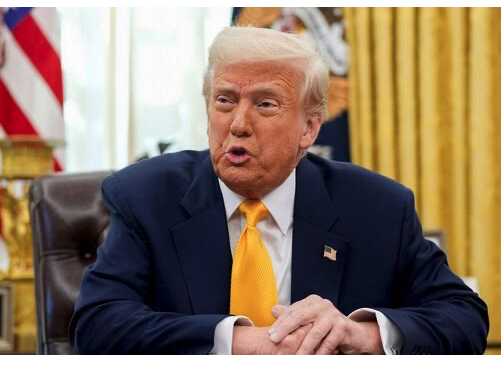President Trump, never one to shy away from shaking the global chessboard, just gave the world another classic move: a rhetorical pivot that had stock markets breathing easier and global pundits scrambling for a fresh take.
After months of chest-thumping tariff talk and China saber-rattling, he now says those eye-watering, knee-buckling tariffs—upwards of 145%—will come down “substantially.” But let’s not get it twisted. This is not some liberal-style apology tour. This is the Art of the Deal, chapter 47.
For those clutching pearls over what looks like a policy reversal, take a deep breath. Trump never said tariffs were forever. He said they were leverage—and that’s exactly how they’re playing out. China got a little too comfortable manipulating currency, exploiting intellectual property loopholes, and flooding U.S. markets with cheap junk. The response? Hit ‘em where it hurts.
Tariffs weren’t about isolation; they were about reset. And now, with a little market volatility and a few diplomatic dance steps later, we’re seeing what any seasoned Republican with a business brain already expected: a recalibration, not a retreat.
Of course, the left-wing media is already drooling over itself, with headlines like “Trump Chickens Out” trending across Chinese social platforms. How cute. The same crowd that thought Biden’s strategy of bending over backwards to every foreign power with a grievance was “restoring norms” suddenly wants to lecture us about toughness? Please.
Trump is playing long-ball here—think economic chess, not emotional checkers. He understands that squeezing China too hard, too fast risks tanking our own economy, but letting them off the hook encourages more of their worst behavior. That’s why he’s dialing down the rhetoric without giving away the store.
And let’s talk about China’s response, because it’s peak hypocrisy. Beijing doesn’t want to “fight,” but they’re not “afraid to fight.” Translation: they know they’ve been outmaneuvered and are trying to save face. They slapped on retaliatory tariffs, flexed their rare-earth minerals, sent back a couple of Boeing jets, and told Hollywood to take a hike.
But at the end of the day, they need the U.S. market more than we need their knock-off tech and surveillance spyware embedded in “smart” rice cookers. Trump knows it. Xi knows it. Wall Street knows it. Hence the rally.
Trump is now saying tariffs on China are going to come down, China will be really happy, we’re going to work together very well. No real explanation of why, or what we got in return. Just that it’s going to come down and “won’t be zero.” pic.twitter.com/WZKC9fSufO
— Isaac Saul (@Ike_Saul) April 22, 2025
Now, the media will harp on Trump’s new “nice guy” tone—talking about living happily ever after and working together with China. Don’t buy the bedtime story critique. Trump’s charm offensive isn’t capitulation; it’s phase two of pressure. The tariffs did their job. They got Beijing’s attention, rattled the supply chains, and reminded multinationals that relying on a communist regime for essential components is a game of geopolitical roulette. Now, Trump’s showing he’s willing to make a deal—but only one that serves American interests first.
Let’s not pretend there’s any real confusion here. The tariffs were a tool, not a tattoo. They were meant to open the door to negotiation, not close it. Trump’s shift isn’t weakness—it’s strategy. It’s leverage. It’s knowing when to twist and when to offer the handshake. Meanwhile, Democrats are still trying to figure out if China is our enemy, our trading partner, or their next donor base.
The tariffs are working!
The Trump admin are close to a deal with China and are negotiating new trade deals with 34 countries.
Trump exercised his leverage, started negotiations from a strong position, and created a sense of urgency.
Art of the Deal.
— Clandestine (@WarClandestine) April 22, 2025
Bottom line? Trump’s playing the game better than anyone else on the board. And if the cost of getting China to the table is toning down the language from “trade war” to “trade rebalance,” that’s a deal most Americans—especially ones who know the value of a tough negotiator—will take every time.
The content in this feed is part of a partnership with IJR.com. While we strive for accuracy, the information presented here may change or be updated. This content does not constitute professional advice or endorsement.


